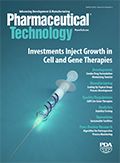Noteworthy Historical Cases of Adverse Drug Reactions
A brief overview of three notable cases of adverse drug reactions.
Thalidomide
Thalidomide, which was released in the late 1950s, is probably the most publicized and well-known medicine that caused significant adverse reactions and has been identified as a major factor in changing the way drugs are tested (1). Originally marketed as a sedative by Chemie-Grunenthal, thalidomide was discovered to have effective anti-emetic properties and, as such, was used for the treatment of morning sickness in pregnant women (2).
Reports about the development of peripheral neuropathy in patients taking thalidomide started occurring shortly after the drug’s release, along with reports of birth defects-although these were not initially linked to the drug. In 1961, two clinicians-one from Australia (3) and one from Germany (4)-confirmed the link between thalidomide and severe birth defects in huge numbers of children. After confirmation of the link between thalidomide and the occurrence of severe birth defects, the drug was withdrawn from markets, however, it had never gained approval in the United States due to concerns raised by Frances Kelsey, a physician with the Food and Drug Administration, over the drug’s safety (1).
As a result of the incidence of birth defects linked with thalidomide, the inter-species variances that can occur with the use of drugs was demonstrated and, as such, has led to changes in drug screening policies, including the requirement of in-vitro testing (1). Additionally, the thalidomide case raised awareness on the importance of enantiomeric purity of drug compounds and their metabolites in terms of desired pharmaceutical effect (5) and also highlighted the importance of post-marketing surveillance.
Nowadays, thalidomide is approved for use in two conditions-skin lesions caused by leprosy and multiple myeloma-and research into the drug’s uses in other conditions is ongoing.
Bromfenac
The non-steroidal anti-inflammatory drug (NSAID), bromfenac (Duract, Wyeth Ayerst Laboratories), was withdrawn from the market around a year after it was introduced as a result of multiple incidences of liver failure and mortality (6). Despite the drug’s efficacy in pain relief and the pre-marketing safety profile being deemed acceptable, a lack of patient adherence to the recommended use, as specified on the label, led to several deaths and the requirement of multiple patients to have liver transplants due to hepatoxicity.
This case highlights the difficulty in determining toxic effects of drugs reliably prior to marketing due to the patient populations that are studied being much smaller than the anticipated post-marketing population (7). Additionally, it underlines the importance of adherence to the recommended and specified drug regimen, as well as the use of reporting systems by regulatory bodies (6).
Rofecoxib
Rofecoxib (Vioxx, Merck) was voluntarily recalled from the market in 2004 as a result of a clinical trial in which concerns were raised that the drug increased the risk of cardiovascular events (8). The NSAID, which is part of a larger family of anti-inflammatories called COX-2 inhibitors, was approved in 1999 for the treatment of arthritis, acute pain in adults, and menstrual pain.
The decision to recall the drug was made after a trial aimed at evaluating the efficacy of the drug to prevent the recurrence of colon polyps was stopped early due to the observed increased risk of cardiovascular events with chronic use of the drug (9). Although the recall was not initiated by regulatory bodies, there was agreement that it was the best course of action for the drug (10,11).
References
1. N. Vargesson, Birth Defects Res. C Embryo Today, 105 (2) 140–156 (2015).
2. N. Vargesson, BioEssays, 31 (12) 1327–1336 (2009).
3. W. McBride, The Lancet, Letter to the Editor, 1358 (1961).
4. W. Lenz and K. Knapp, Ger. Med. Mthly, 7 (8) 253–258 (1962).
5. A.L. Spek, Acta Cryst. B, 72 (5) 659–660 (2016).
6. FDA, “Questions and Answers for Withdrawal of Duract,” fda.gov, Archived Content [Accessed Feb. 8, 2020].
7. M.A. Friedman, et al., JAMA, 281 (18) 1728–1734 (1999).
8. B. Sibbald, CMAJ, 171 (9) 1027–1028 (2004).
9. R.S. Bresalier, et al., N. Engl. J. Med., 352 (11) 1092–1102 (2005).
10. FDA, “Vioxx (Rofecoxib) Questions and Answers,” fda.gov, Drug Safety Information, Sep. 30, 2004.
11. EMA, “European Medicines Agency Statement Following Withdrawal of Vioxx (Rofecoxib),” ema.europa.eu, Press Release, Oct. 16, 2004.
Article Details
Pharmaceutical Technology
Vol. 44, No. 3
March 2020
Page: 28
Citation
When referring to this article, please cite it as F. Thomas, “Noteworthy Historical Cases of Adverse Drug Reactions,” Pharmaceutical Technology 44 (3) 2020.

Entering New Domains for 3D Printing of Drug Products
April 6th 20253D printing of personalized medications is currently possible under existing compounding regulations, offering enhanced process control through automation. But new legislation coming in 2025 will allow 3D printing as part of a distributed manufacturing framework.